#miyamizu mitsuha
Explore tagged Tumblr posts
Text


Tachibana Taki & Miyamizu Mitsuha ; Your Name. ☆ Good Smile Company
#tachibana taki#taki tachibana#miyamizu mitsuha#mitsuha miyamizu#your name#your name.#kimi no na wa#your name figure#good smile company#gsc#pop up parade#anime#anime figure#figure#figure collecting#anime figurine#figurine#anime collecting#scale figure#myfigurecollection#manga
128 notes
·
View notes
Text

KIMI NO NA WA. (2016-2017) by shinkai makoto & kotone ranmaru
17 notes
·
View notes
Text
Miyamizu Mitsuha/Tachibana Taki (Kimi no na wa)

Important: Please do not vote if you don't know the characters.
#kimi no na wa#your name#tachibana taki#miyamizu mitsuha#taki x mitsuha#mitsuha x taki#taki tachibana#mitsuha miyamizu#anime poll#shipping poll#tumblr polls
6 notes
·
View notes
Text
ANIME TBOY SWAG TOURNAMENT ROUND 1 MATCH 20
Hayakawa Aki (Chainsaw Man) VS Miyamizu Mitsuha (Your Name)

#anime tboy swag bracket#have propaganda? send it in! i'll add it in a reblog#chainsaw man#aki hayakawa#hayakawa aki#mitsuha miyamizu#miyamizu mitsuha#your name#round 1
25 notes
·
View notes
Text
‘Your Name’, Kishotenketsu, and the Power of Storytelling.

(This is a messy little essay, but I just found out a way to watch anime and read manga... and my life as a storytelling fanatic has been the biggest lie in the best way possible. Please feel free to correct me if I got anything wrong, as I'm still new here. - I'm most versed with western stories and Bollywood/Indian cinema. Also when I say 'western stories' I'm generalizing to more of the 'Hollywood Blockbuster' sort of movies, and as far as movies/manga that use kishotenketsu, I've only seen 'Your Name', 'A silent Voice', 'The promised neverland' and I haven't finished 'the Girl from the other side'.)
In 2016, Mikato Shinkai created the film ‘Your Name’, which proceeded to become one of the most beloved movies of the time. This is due to both the storytelling tatics used, along with the intertwined rhetorical strategies. From the differences inherent in the Kishotenketsu storytelling method, to the inspirations garnered from the environment, and the message showcased through its stunning visuals, ‘Your Name’ provides an example of how different methods of storytelling showcase vastly different themes from that of western media, and in turn create a vastly different effect.

An aspect of East Asian culture and storytelling is the emphasis of the world, its beauty, and the effect it has upon those who live in it. For Mikato Shinkai, this became apparent in his inspiration. In 2014 he visited a shrine, which gave him the idea for ‘Your Name’. This shrine visit contrasted with both his visits to Tokyo and his childhood within the countryside, and this dualistic perspective became the basis for the movie’s message. Other motifs of the time also seeped into the movie’s setting and its theme, such as the ‘red string of fate’ often depicted in East Asian culture. This red string symbolizes the idea of both the supernatural and the connection that can come as a result. The first scene of the movie showcases the red string, in which the two main characters of the film - Mitsuha and Taki - become connected after Taki repeats the movie’s title, as he asks Mitsuha for her name. Mitsuha and Taki act as the speakers for the movie’s message, for they are vessels for different aspects of the same message. It’s often this exploration of the world and its relation to the characters that creates a method for delving into the characters and their internal characteristics in a way that is not often seen in western storytelling. In other stories, backstory takes the place of this, yet both accomplish the same goal - ‘Ki’ or ‘introduction’. The point of this introduction is not to introduce the plot,however, as one of the most impressive aspects of Kishotenketsu is how little it relies on a typical plot. Rather, the creator weaves a world and characters that have a history and a past quite quickly. It gives the narrative an air of depth that more plot-based stories would not be able to accomplish in such a short amount of time.
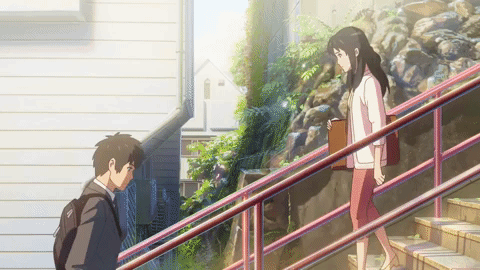
The characters of ‘Your Name’ also differ from western storytelling. Instead of an agent of the plot, or even being a conflicting force with the plot, characters in ‘Your Name’ each embody a different aspect of the overall point. They are characters first, and the story caters to that rather than nudging them to change with the whims of the plot. Mitsuha embodies the idea of perspective. She’s quite shy and polite, and withstands the humiliation of her family’s rituals along with the burden of being the governor’s daughter. Her current life suffocates her, and she wishes for another, more glamorous life within Tokyo. This all shifts when the story changes from the ‘Ki’ or ‘introduction’ stage to the ‘Sho’ or ‘development’ stage. Mitsuha wakes up in Taki’s body, and she experiences a shift in perspective and the life she’s always wanted. Whilst she indulges herself in the life she craved, she also sees Taki’s world through her lens. It’s Mitsuha who connects with Taki’s crush. It’s Mitsuha who enjoys Taki’s life to the point where the others take notice of his difference in personality. It’s Mitsuha who uses her childhood in which she weaved together threads - that symbolizes connection through time - into braids to change Taki’s life for the better. The tone of the film shifts (right before the ‘ketsu’/ ‘twist’ stage) to Taki’s different view on the same message. His point of view - especially when he inhabits Mitsuha’s body - focuses on time and the connections through it. Such as when Mitsuha’s grandmother tells him about masubi - the flow of time and how their work as a priest family is to braid the threads of time together. These dual aspects of the narrative interweave through the two characters in a way that is seamless and allows for a deeper analysis of the message made.

This film caters to people who live in Japan, as both the story structure and the societal expectations differ from western ideals. Because of the ages and desires of the two main characters, ‘Your Name’ specifically caters to the young adult audiences, for they can see themselves within the protagonists and their desire for a different life with different experiences. Those who see their environment as their cage, and who think if they were only able to find another place, another life to live, they may discover that this film speaks to them and inspires them to live as themselves.
Overall, this movie is the tale of two people connected through time via body swapping on random days. This continues through the development phase until Taki discovers the meteor that killed Mitsuha and her town three years ago. It is through their shared perspectives that they not only save the residents of Mitsuki’s town, but they also discover the connection in their past. Through this narrative, Makoto Shinkai wishes to impart on his audience the messages of two interwoven themes: of the differences in perspective over the same event or environment, and how those shared events connect people in time. The first scene established this through the meteor as it painted the sky in brilliant colors. Taki looked upon the meteor with nothing but awe and wonder, yet this is the same meteor that sent Mitsuha to her death. The meteor, despite the destruction it wrought, connected both Mitsuha and Taki, for it is implied that the supernatural of Mitsuha’s world started the events of the movie for the sake of preventing the meteor’s deaths. Similar to the braids that Mitsuha had to weave and the one she gave to Taki at the beginning of the narrative, individuals' lives are connected to these special moments of love and wonder, such as when Taki marveled at the same rituals that embarrassed Mitsuha. Their differences in worldview may cause the threads in their lives to untangle or knot, but they experienced it together. The audience then left the movie with a newfound appreciation for their unique worldview and the small things in their environment that they may take for granted. They are connected to others who will value them, both in their past and when they continue to the future.
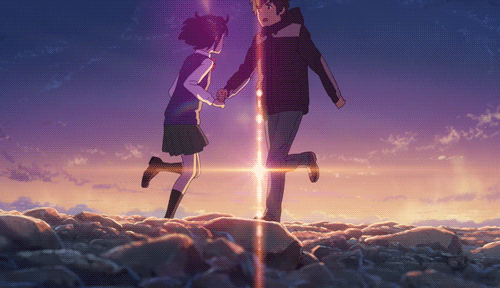
Kishotenketsu allows for a deep analysis on a specific message or a specific perspective, whereas a hero’s journey or a three-act story structure allow for a transformative journey of self-development. Both have their strengths and there is a spectrum of artistic expression and overlap between the two methods. Kishotenketsu, for example, is able to explore a complex theme that surrounds multiple sub-themes- whilst doing so through a close examination of the characters and their world. A story made in the west may be expected to have a greater emphasis on the conflict, lest the audience become bored. This leaves the message and the characters to compete with the plot unless the creator weaves them together. Even so, western stories emphasize change driven by conflict, and they deem a proper story one characterized by a transformation to face an external obstacle. In kishotenketsu there is no difference between any internal or external development, for the character navigating the world and the premise set up in the introduction provides all the development needed.
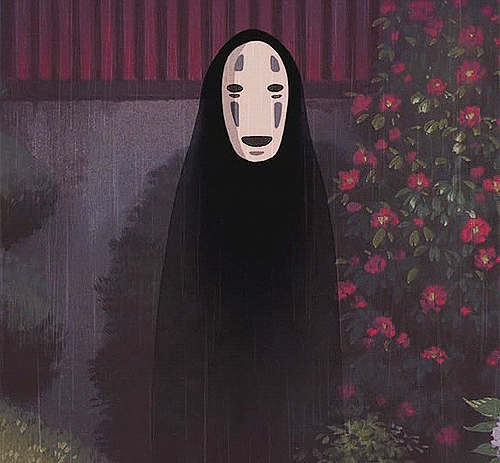
An example of a western story in which both the plot and the message are interwoven to achieve a transformation is Puss in Boots: the Last Wish. This film explores a fear of death and the anxiety that comes with this. Through the change in the main character, the audience - who may also share this experience, as it is deeply personal to the creators - learns the lesson of living life to the fullest instead of running from fear. This is not a lesser story structure by any means, but it does serve a different purpose. This structure is meant to provide an example to the audience about how to grow from flaws or limitations, whereas kishotenketsu is similar to its poetic roots in its overall purpose. These stories do not need character transformations or a removal of flaws - such as in ‘Your Name’ where both Taki and Mitsuha forget the events of the film - instead they look at life and depict it as beautiful art and magical stories. The story is allowed to spend time with the mundane and the characters, and it leaves the audience with an impression and an appreciation of the world. It’s a new perspective, a new way to look at life, and the message is left to personal interpretations. (Rarely is the message ever outright said. The message in western stories is much more obvious and apparent). Kishotenketsu showcases the wonder of life, as it is, in the present - no change required.
#anime and manga#animanga#manga#your name#miyamizu mitsuha#makoto shinkai#kishotenketsu#storytelling#essay writing#in this essay i will#discussion#media#essay
9 notes
·
View notes
Text


"There’s no way we could meet. But one thing is certain. If we see each other, we’ll know. That you were the one who was inside me. That I was the one who was inside you."
Your Name
#mitsuha miyamizu#mitsuha#taki#taki tachibana#your name#Yournameedit#kimi no na wa#Kiminonawaedit#Knnwedit#makoto shinkai#anime edit#animeedit#animedaily#anime gif#fyanimegifs#dailyanime#dailyanimatedgifs#animationsource#animationsdaily#dailyflicks#filmtvcentral#tvfilmdaily
676 notes
·
View notes
Text
Sometimes it hits me that I have to live with the fact that I can never go back to 2016 and experience the emotions I felt the first time I saw Kimi No Na Wa (Your Name) and realize that Taki worte "I Love You" instead of his name in Mitsuha's hand.....
#kimi no na wa#your name#your name anime#mitsuha miyamizu#taki tachibana#mitsuha x taki#anime#makoto shinkai
109 notes
·
View notes
Text

★ 【VoxNote】 「 瀧と三葉 」 ☆ ✔ republished w/permission ⊳ ⊳ follow me! insta • x • bsky
83 notes
·
View notes
Text
"I can't remember your name with this... stupid."


19 notes
·
View notes
Text
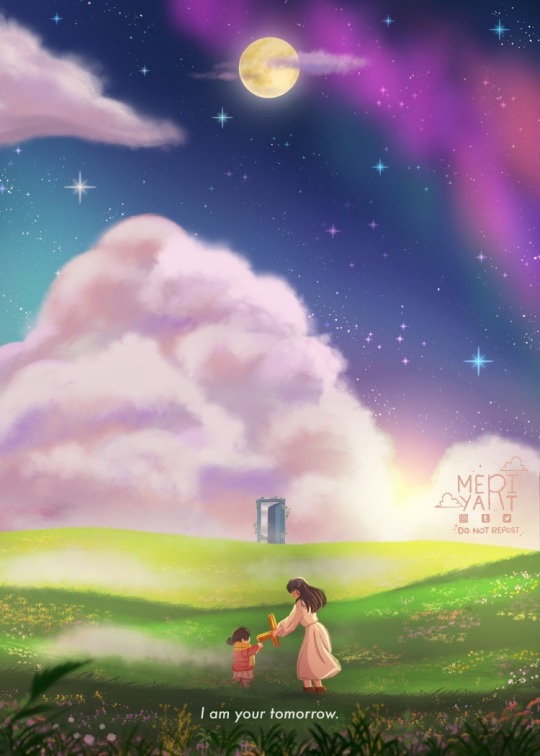
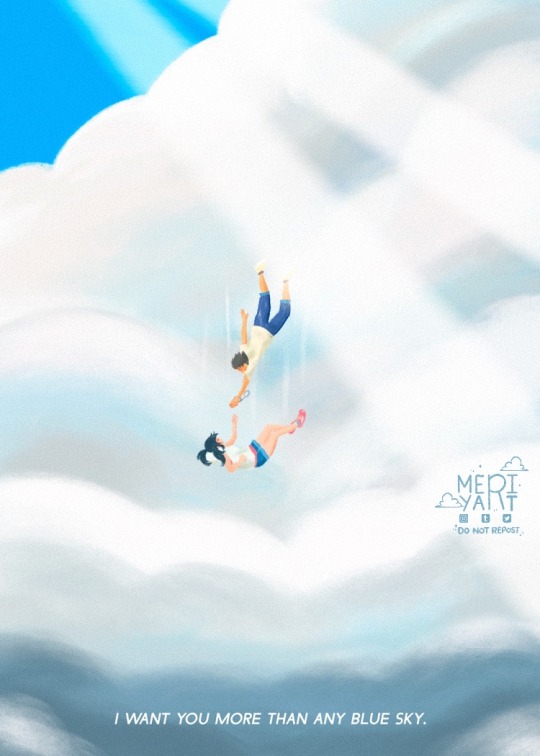
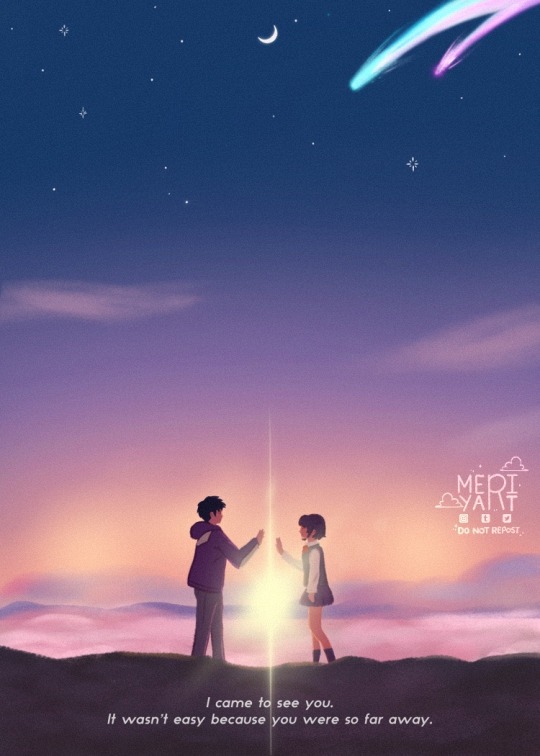
makoto shinkai skies just hit different
#my art#makoto shinkai#suzume#suzume no tojimari#suzume fanart#suzume no tojimari fanart#weathering with you#weathering with you fanart#suzume spoilers#tenki no ko#your name#your name fanart#kimi no na wa#kimi no na wa fanart#mitsuha miyamizu#taki tachibana
557 notes
·
View notes
Text

KIMI NO NA WA. ANOTHER SIDE: EARTHBOUND (2017-2019) by kanou arata & nakamura junya
#kimi no na wa. another side: earthbound#your name. another side:earthbound#kimi no na wa.#your name#miyamizu mitsuha#tachibana taki#shounenedit#*nikki
3 notes
·
View notes
Text
TOH X Your name‼️

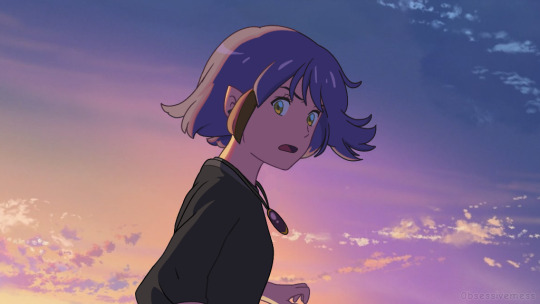

I can't lie, I've had this planned for a while but just never had the time go actually get around to drawing it which I regret because now the shows ended and the fandoms dying😭
#the owl house#luz noceda#amity blight#luz toh#toh#amity toh#lumity#theowlhouse#Your name x TOH#TOH x Your name#mitsuha miyamizu#taki tachibana#anime
754 notes
·
View notes
Photo
Insert Random Comments

Commission - Maidtsuha-2-200dpi
CUSTOMER’S TITLE AND DESCRIPTION:
Title:
Maidtsuha
Description:
Mitsuha gives Taki a surprise.
——————- ——————- From the Old woman~ :3 Commissioned by http://maxandemilytate.tumblr.com/ . Thank you very much for the business and the permission to post.
I did *not* watch the movie so please allow me to apologise in advance if this does not look like it. >.<~~
Fanart of an adult Miyamizu Mitsuha from the animated movie Kimi no na wa. :3 Tip-Jar for the old lady (≧∀≦)/ : https://ko-fi.com/A430B9Z Am available for Commissions. ( [email protected] ) Prices are at the following: http://melisaongmiqin.wixsite.com/melisaongmiqin/commission-rates
4 notes
·
View notes
Photo
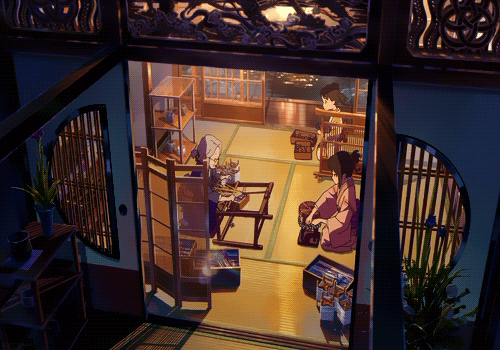
#kimi no na wa#your name#my gif#mitsuha miyamizu#shinkaiedit#anime aesthetic#makoto shinkai#anime gif
319 notes
·
View notes
Text





#kimi no na wa#your name#kimi no nawa gif#your name gif#anime#gif#anime gif#mitsuha miyamizu#taki x mitsuha#taki#girl#anime girl#love#dailyghibli#fyanimegifs#studio ghibli#studio ghibli gif#makoto shinkai#lovers#feeling#inlove
280 notes
·
View notes
Text

43 notes
·
View notes